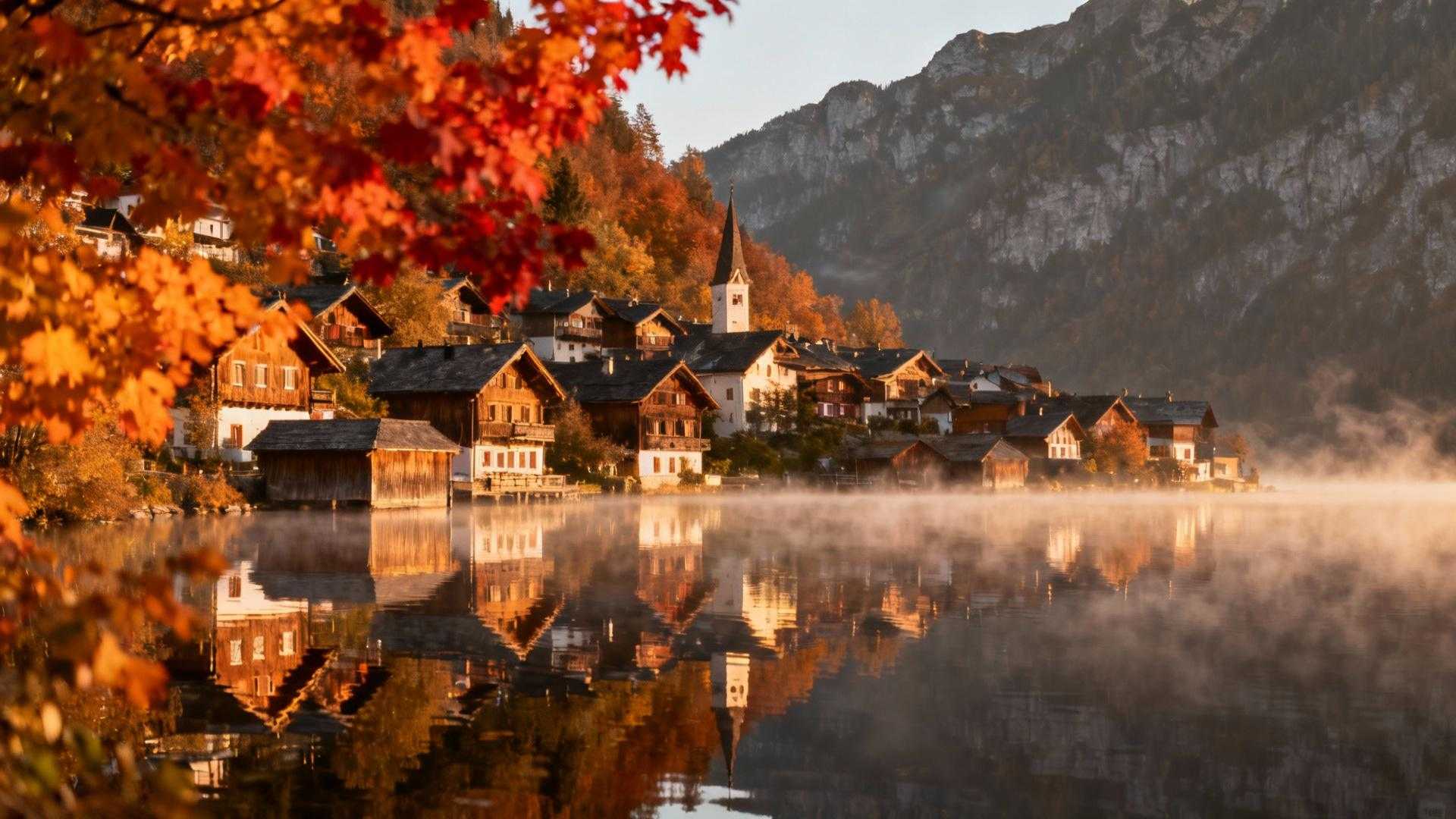At 6:47 AM on a crisp October morning, I watched 700 residents of Hallstatt emerge for their daily routines before the invasion begins. By 9 AM, up to 10,000 tourists would transform their quiet Austrian village into what locals call “Instagram hell.” This UNESCO World Heritage site, home to humanity’s oldest salt mine operating for 7,000 years, has become Europe’s most dramatic example of a community fighting back against social media tourism.
The numbers tell a shocking story: 1 million annual visitors descending on fewer than 800 residents. That’s proportionally more overwhelming than if 400 million tourists visited France each year. No wonder locals blocked the main tunnel road in August 2023, carrying signs reading “World culture at its end.”
But here’s what those Instagram feeds don’t show: the authentic Hallstatt still exists in the margins, protected by residents who know exactly when their village belongs to them again.
The dawn window locals guard fiercely
When Hallstatt belongs to its people
Between 5:30 and 8:30 AM, you’ll witness the real Salzkammergut culture that predates any Disney movie. Local baker Hans Wallner opens his shop at 6 AM, greeting neighbors in Austrian German while preparing traditional Salzburger Nockerl. The 16th-century market square echoes only with church bells and the gentle lapping of Hallstätter See against ancient wooden piers.
The tourist tsunami that changes everything
Mayor Alexander Scheutz implemented bus quotas specifically to reduce visitor numbers by one-third, but the transformation remains jarring. At 9 AM sharp, the first tour buses arrive from Vienna and Salzburg, disgorging passengers who often shout across the lake for perfect medieval photo opportunities without understanding they’re disrupting a living community rooted in 7 millennia of continuous salt mining.
How residents protect their 7,000-year heritage
Wooden barriers blocking Instagram spots
The town council erected strategic fencing around the most photographed lakeside viewpoints, not from spite, but from necessity. Resident Friedrich Idam, whose family has lived here for six generations, explains: “We’re not anti-tourism. We’re anti-destruction.” These barriers force visitors to engage with authentic experiences rather than collecting selfies.
The salt mine that defines real Hallstatt identity
While tourists scramble for swan boat photos, locals point toward the Salzwelten Hallstatt mine carved into the Dachstein massif. This isn’t tourist theater—it’s the world’s oldest industrial site, where Celtic peoples first extracted “white gold” in 1200 BCE. The mine’s funicular railway, built in 1884, still carries both salt workers and the few visitors who seek authentic cultural experiences over Instagram opportunities.
The evening reclamation ritual
After 4 PM when tour buses retreat
Local life resurfaces as day-trippers evacuate. Gasthaus Zauner, Austria’s oldest pastry shop established in 1827, transforms from tourist trap back into neighborhood gathering place. Residents emerge for evening Spaziergang walks around the lake, reclaiming streets where they couldn’t walk freely hours earlier.
Lake Gosausee: the locals’ secret escape
When Hallstatt becomes unbearable, residents retreat to Lake Gosausee, just 20 minutes away. This glacier-fed lake offers identical Alpine beauty with the Dachstein glacier backdrop, but receives fraction of Hallstatt’s visitors. Local hiking guide Maria Steiner calls it “Hallstatt’s soul without the circus,” where authentic mountain culture still thrives undisturbed.
What locals wish travelers understood
The cultural cost of viral fame
Hallstatt’s global fame, amplified by Disney’s Frozen inspiration and Chinese replica construction, fundamentally altered its character. Three generations of the Wallner family operated traditional lodges before Instagram tourism priced out locals. Young Austrians can no longer afford to live in their ancestral village, creating cultural hollowing that residents describe as “death by a thousand selfies.”
Respectful engagement that locals appreciate
Residents welcome visitors who arrive during shoulder hours, engage with salt mining heritage, and treat Hallstatt as a living community rather than outdoor museum. Book overnight accommodation to experience dawn and dusk tranquility. Visit the Hallstatt Museum to understand Celtic origins before photographing. Learn basic German greetings—locals soften considerably when tourists demonstrate cultural respect.
The residents of Hallstatt aren’t hiding their village from the world—they’re protecting its soul from exploitation. Their 7,000-year-old community deserves travelers who understand the difference between visiting and invading.
Respect their dawn hours, engage with their heritage, and you’ll discover why this tiny Austrian village has survived since the Bronze Age. Visit thoughtlessly, and you’ll contribute to the cultural erosion that locals fight every single day.
Planning your respectful Hallstatt visit
When should I visit Hallstatt to avoid crowds?
Arrive before 8:30 AM or after 4:00 PM during October for the most authentic experience. Weekdays in shoulder seasons offer the best balance of accessibility and cultural respect, when locals can actually navigate their own streets.
How can I experience authentic Hallstatt culture?
Book the Salzwelten mine tour to understand the 7,000-year heritage that defines local identity. Stay overnight at family-run guesthouses, shop at local bakeries during morning hours, and engage with residents in German when possible.
What alternatives exist near Hallstatt?
Lake Gosausee offers identical Alpine beauty with minimal crowds, while Bad Ischl provides authentic Salzkammergut culture without overtourism pressure. Both destinations welcome visitors seeking genuine Austrian mountain experiences.
Why do locals oppose Instagram tourism?
With 10,000 daily visitors overwhelming 700 residents, locals face displacement, cultural erosion, and quality-of-life destruction. Their protests target disrespectful behavior and unsustainable numbers, not tourism itself.
How much does visiting Hallstatt cost?
Overnight accommodation ranges from €80-200 depending on season, while day parking costs €6. The salt mine tour costs €34 for adults, but provides authentic cultural engagement that locals appreciate over superficial photo tourism.
